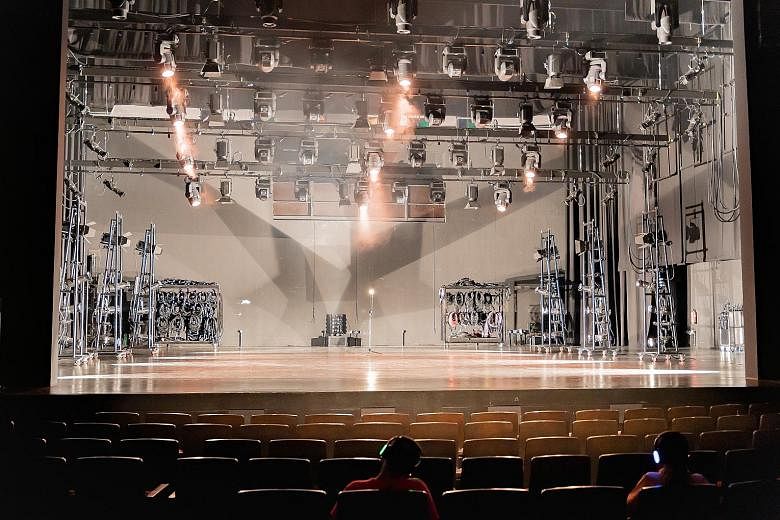THEATRE
THE SILENCE OF A FALLING TREE
Singapore International Festival Of Arts v2.020
Victoria Theatre, Sunday
Theatre is a communion of the collective imagination.
But what happens when there is a forced separation of the communal experience?
The last instalment of The Silence Of A Falling Tree attempted to answer this question and the result was an evocative, layered theatrical experience.
This show was part of a series of four audio experiences created by Compound, a collective led by Young Artist Award recipient Irfan Kasban, for the Singapore International Festival Of Arts' v2.020 programme.
The first three episodes were purely digital, thanks to the pandemic-induced closure of theatres.
But the last one brought participants to the Victoria Theatre for a "live" staging, as venues have reopened with strict measures in place.
Each member of the small audience was equipped with headsets that variously glowed green, blue and red.
Socially distanced in the darkened hall, each individual was a part of, yet apart from, the audience.
The audio narrative, opening "backstage" with sounds of actors doing vocal exercises and even burping, simultaneously united and divided the audience.
In painting word pictures of an empty stage, the work forced one to participate in a shared act of imagining.
But the narrative, which called on listeners to imagine their childhood homes in one part, also emphasised the solitude of the individual. This dichotomy was all the more vivid with everyone gathered together in a shared space.
Yet this shared act of imagining also ignited curiosity and empathy - triggered by the narrative as one recalled one's childhood and associated memories.
Seated in a hall with other people attempting the same act of recollection, one began to wonder about their childhoods as well.
The previous instalments of this series felt a bit haphazard and hesitant in their experimentation with the audio platform and their audience of one.
Track 1: The Tree, with its instructions to lie on the floor and focus on breathing, came across like a yoga class.
Track 2: The Falling, which encouraged listeners to think about consumption in a supermarket and instructed them to engage with a supermarket worker, felt like it was straining for content.
Track 3: The Silence worked better with its exhortation to look at trees in a park and to consider the act of remembering.
The final track, pre-recorded but treated to sound "live", raised fundamental questions about the creation and consumption of the theatre form.
The audio format may not seem theatrical, but this staging certainly challenged this assumption in thought-provoking ways.


